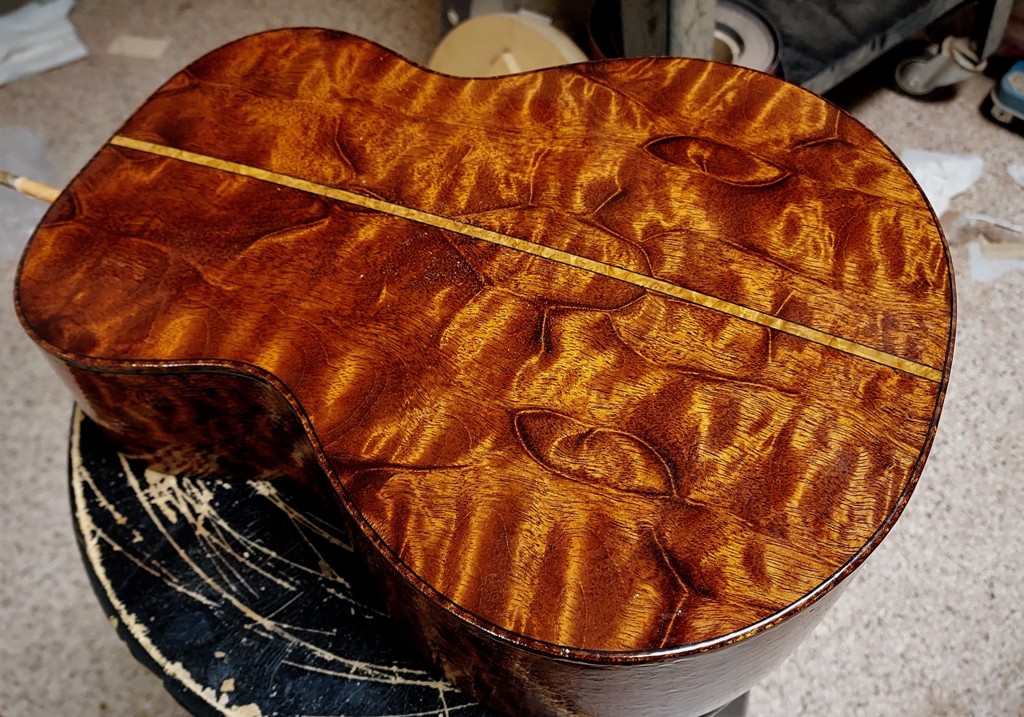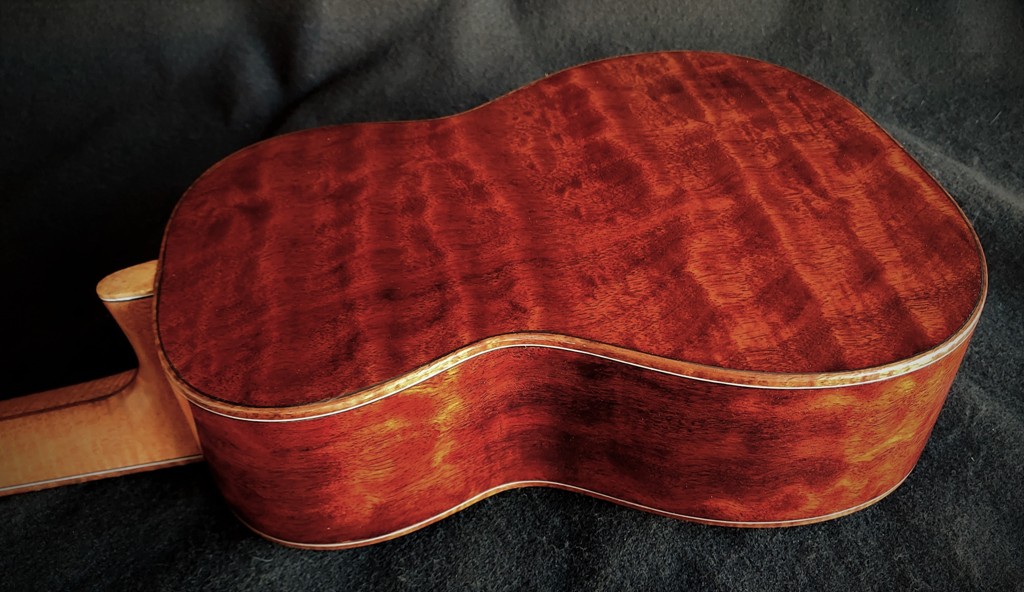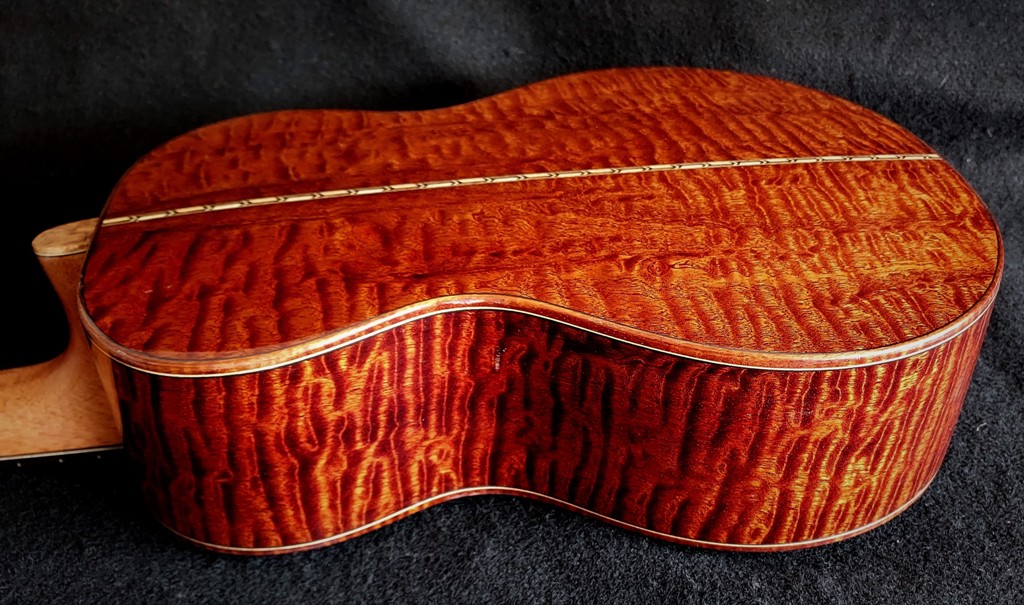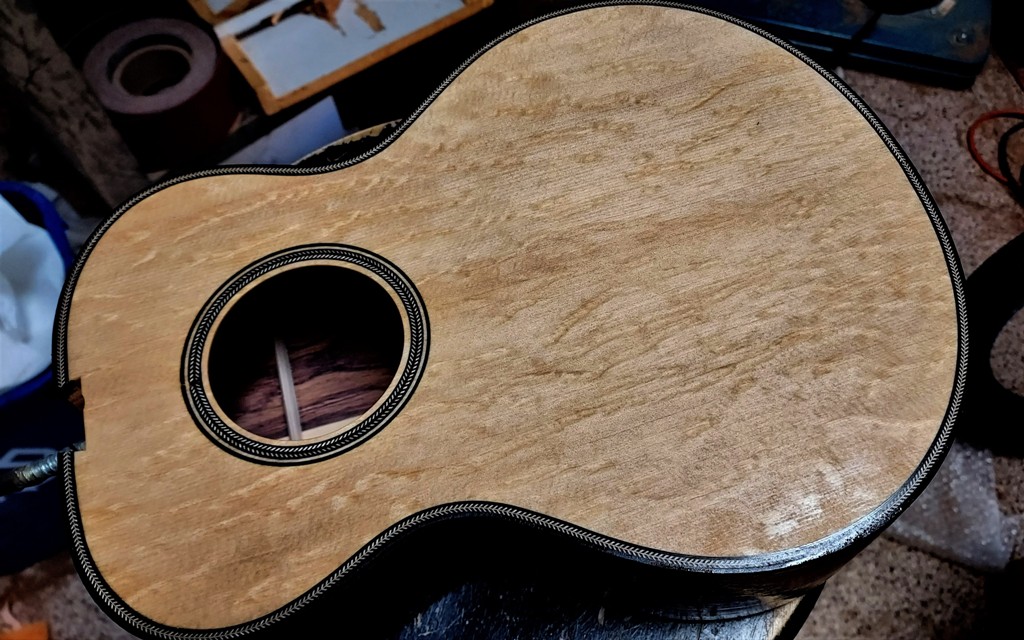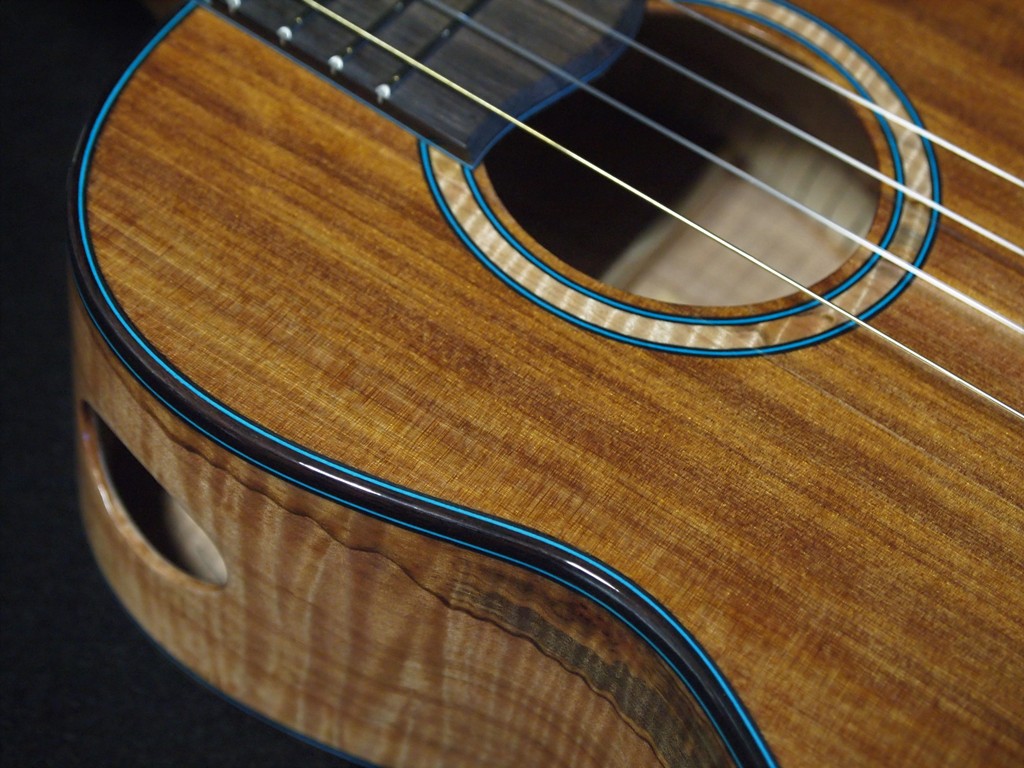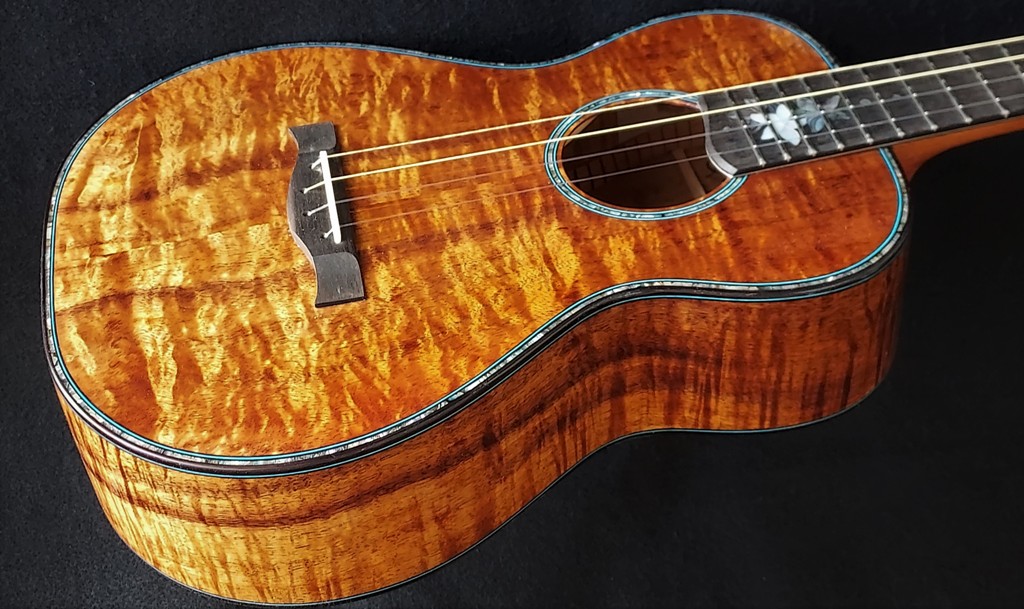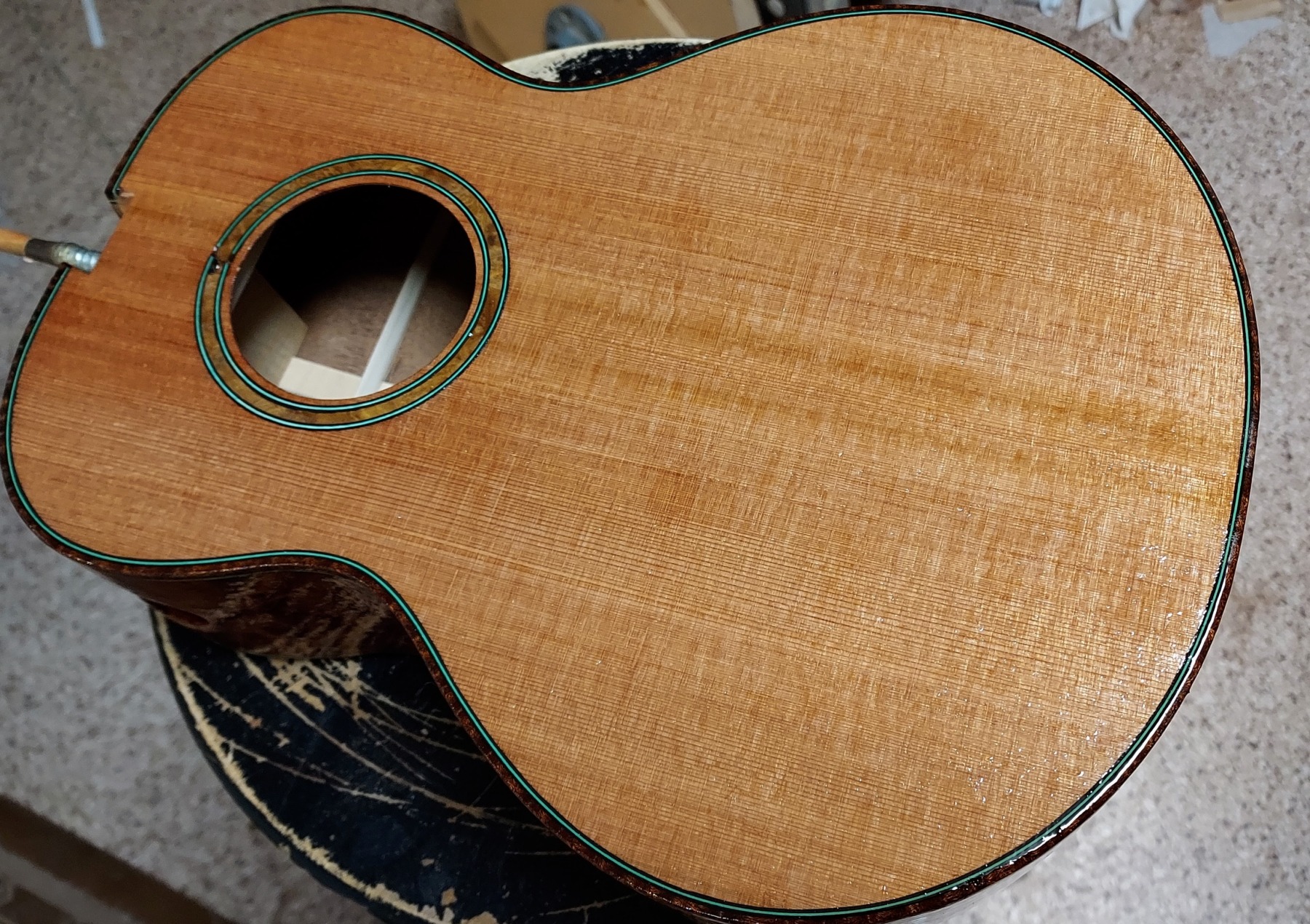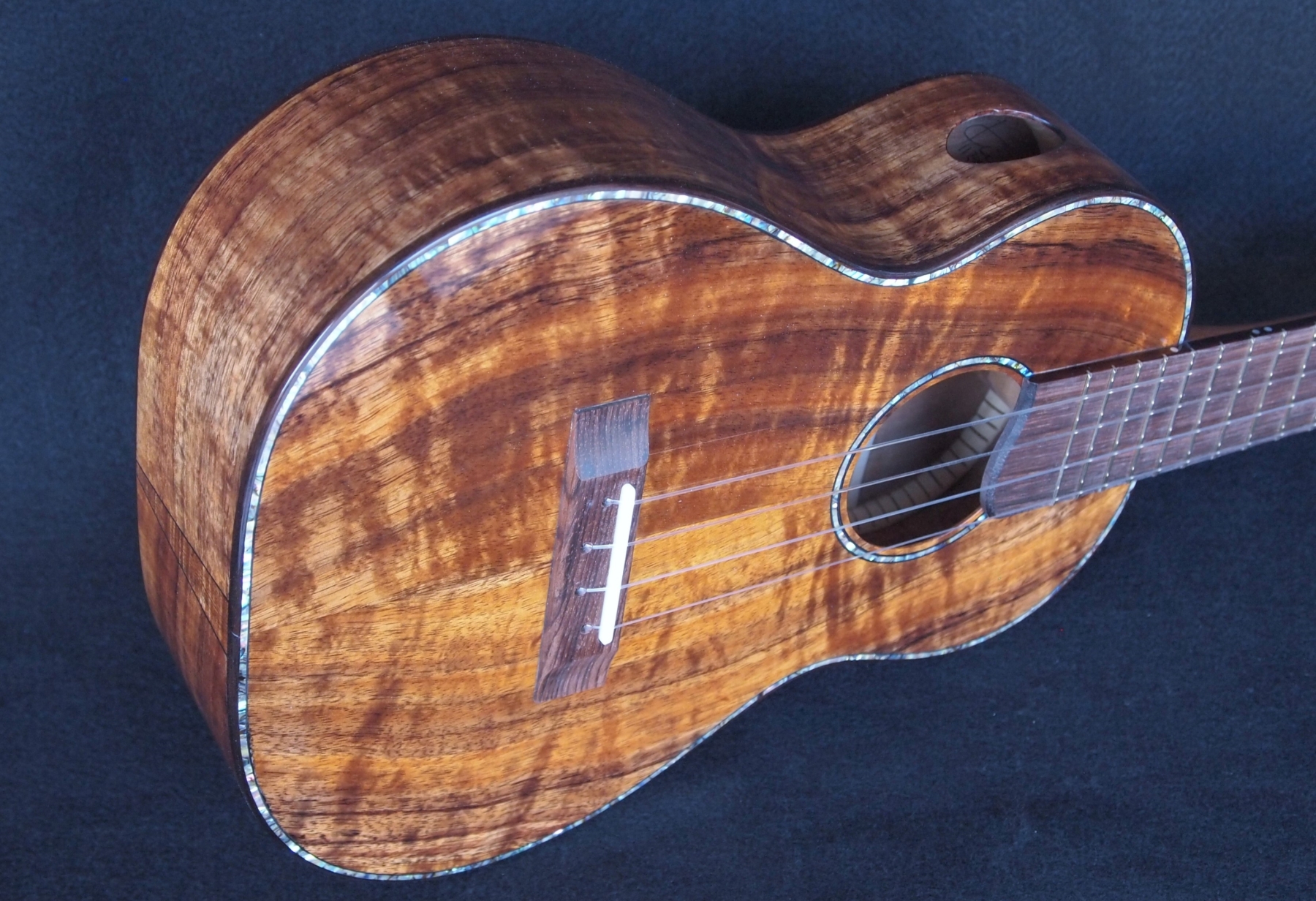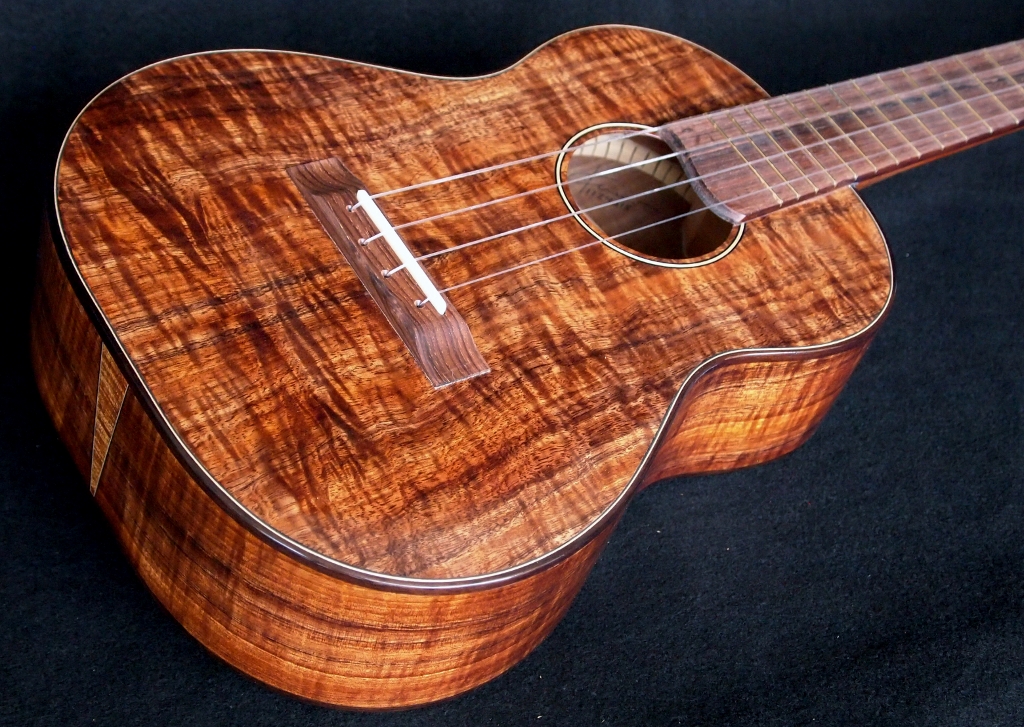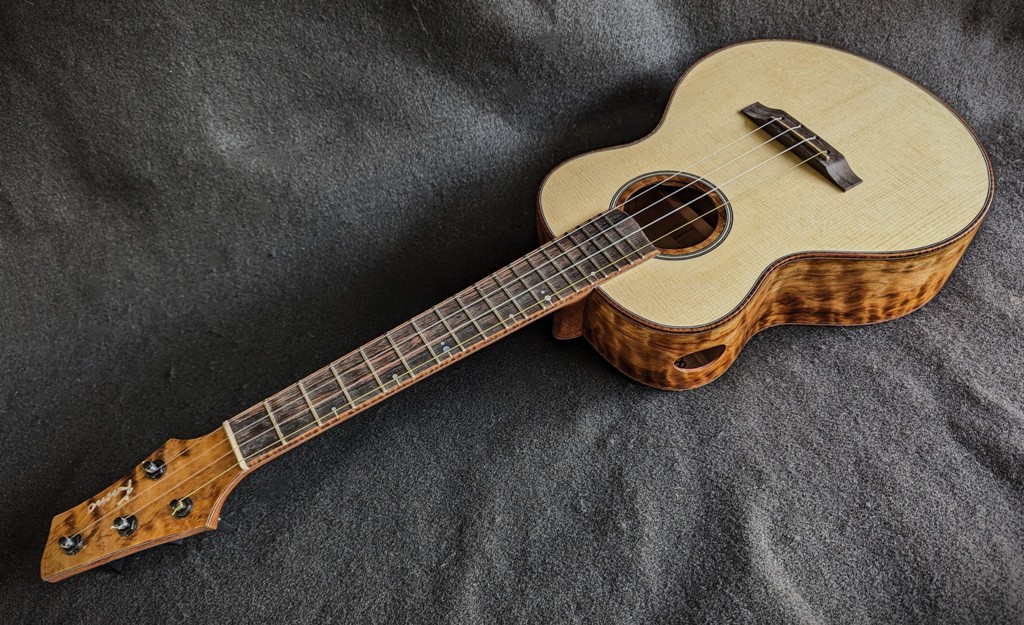Ukulele Woods
I’m working, but with the holidays, the weather and such production has been bit slow. If you are curious about current projects please check my Instagram page. Here are a few comments about instrument woods.
The Tree
Ah, the mystery of “The Tree” wood one of the most revered, expensive and unobtainable woods in all of lutherie. Here’s a link to a Smithsonian Magazine article about this treasured wood. I found it to be a worthy read. https://www.smithsonianmag.com/arts-culture/the-legend-of-the-music-tree-180979792/
I’ve done a bit more research on my own and have heard that not all of the wood from the tree is as highly figured as you might see. Recently a friend acquired, at extreme cost, a billet which when re-sawn for guitar sets was rift with dry rot. Ouch–that had to hurt! I remember Grant at the old Allied Lutherie telling me that they had to cut a lot of the tree just to get a few Tortoise Figured sets for guitars. Ukulele sets are extremely difficult to find.
Figured Woods
Which leads me into the conversation about figured woods. Miles Gilmer at Gilmer Woods in Oregon has probably been importing rare and figured woods as long as anyone in the US. I remember being able to walk into his main warehouse years ago where there were stacks of “black” ebony, blackwood billets, and rosewoods that would make you crazy. Hah! Those were the days. Marc, His luthier woods expert, told me then about the tremendous demand for figured, quality woods and the lack of and dwindling supply. Well, those days are really here. It’s nice to see a really curly or quilted wood on a guitar or ukulele but if you look around you won’t see that many. Those that you do see might cost a shiny penny.
Plain and Ugly Looking Woods
Are just as capable of producing a quality instrument as those that are highly figured. It’s not appearance that makes the sound. For example, woods like the Earth Tone Cedar from Alaska Specialty Woods might not have that perfect visual appeal (it’s a little streaky and a little orangish), but talk about tone–wow! This wood comes from fallen trees that have weathered the harsh elements for years before being found and milled for musical instruments.
Hawaiian Koa
The traditional wood of the ukulele is an Acacia variety. There are some 1300 different varieties of this species but only one grows in the Hawaiian islands that can be called Koa. Supposedly, all koa harvest in the islands is from trees that certified non-vital. Available stocks are not always highly figured. With time and degradation the yield from these trees isn’t exactly abundant. I think I remember saying years ago that if you purchase a koa instrument you like, you should keep it. It will be many years before Koa reforestation produces trees that are large enough for commercial purposes–if allowed by the Hawaiian government. Might it be possible that the Koa Ukulele of the past and present will be a rare commodity in the future?
Just For Reference
Everyone wants a tight grained Sitka sound board–let’s say 30+ growth rings per inch? Okay, a 6″ piece of wood for an ukulele might then have 180 growth rings the equivalent of 180 years of growth. But wait! What if that piece came from a tree with a trunk diameter of 4 feet. If my math is correct then that tree might be approximately 720 years old. Yikes! A seedling in 1502? I might be exaggerating a touch but I’m trying to make a point. I’ve got redwood in the shop from fallen trees that might be thousands of years old. Respect!
So, when looking for the “perfect” instrument with that “perfect look” please keep some of these comments in mind.
Thanks and Happy New Year,
Da Kimo


